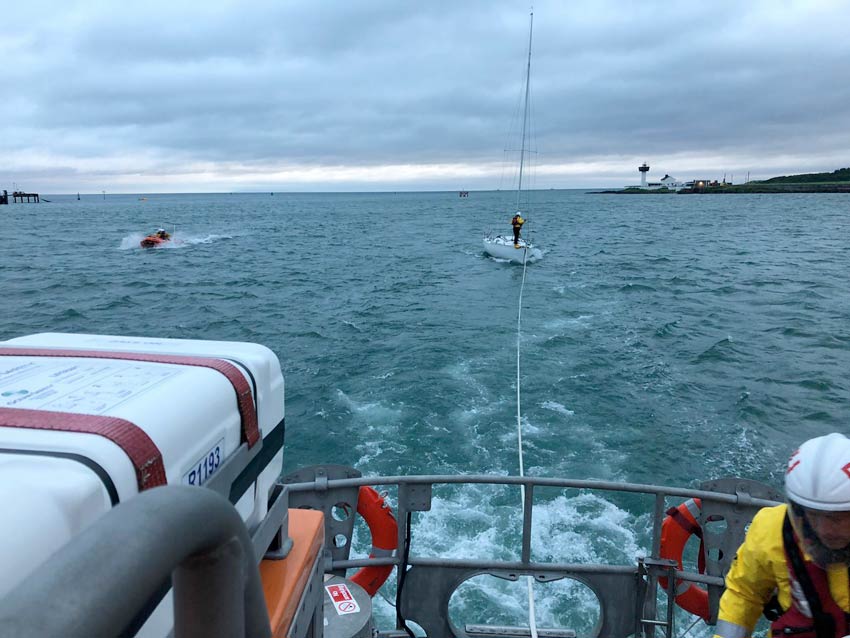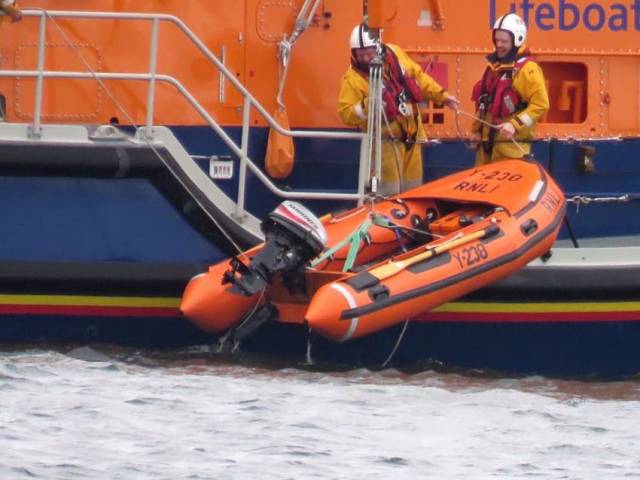Portrush RNLI’s volunteer crew launched yesterday evening (Monday 22 July) to reports of a jetskier in difficulty at Benone Beach around 8.17pm.
The crew, who had just finished an exercise and had been stood down, launched the all-weather lifeboat in record time after the HM Coastguard request.
It was reported that three persons had already entered the water to assist the jetskier but had to return to shore to receive medical attention from the coastguard.
The lifeboat crew reached the jetskier at 8.35pm in smooth seas but with a strong offshore breeze which had hindered the three people attempting to assist.
After the jetski was secured alongside the lifeboat, the crew took the casualty on board, where he assessed and deemed to be medically fit.
It was then decided that the jetskier and his craft should be taken back to the beach, using the all-weather lifeboat’s smaller Y boat, to the waiting coastguard.
Des Austin, coxswain of Portrush RNLI, said after the callout: “The jetskier had no wetsuit on and even in a balmy summer evening the water is still very cold, so it was important that we reached him as soon as we could.
“There was also a strong off shore wind which made it difficult for the other swimmers to assist, so the members of the public did exacty the right thing by calling for help.
“It’s also key for us to make sure that the jetski is recovered also as it could pose a hazard if not taken out of commission.”
 Larne RNLI tows the 37ft yacht back to East Antrim Boat Club | Photo: RNLI/Samantha Agnew
Larne RNLI tows the 37ft yacht back to East Antrim Boat Club | Photo: RNLI/Samantha Agnew
Much earlier in the day, Larne RNLI volunteers’ pagers sounded at 5am after reports that a 37ft yacht had broken its moorings at East Antrim Boat Club and run aground in Larne Lough, causing a potential hazard to the shipping lanes.
Both lifeboats were launched 10 minutes later in moderate seas on an overcast morning, and once on scene it was decided to place a crew member from the inshore lifeboat on the casualty vessel to secure a tow line.
Once brought into deeper water and assessed as being safe and undamaged, the yacht was then towed by the larger all-weather lifeboat to a spare mooring back at East Antrim Boat Club.
“It was an early start for our volunteers this morning and we had a good turnout of crew for the callout.” said Larne’s lifeboat operations manager Allan Dorman.
“This scenario is something that we practice during training and I was glad to see that everyone worked together for a successful outcome.”
































































